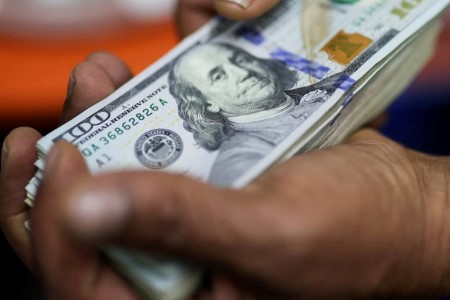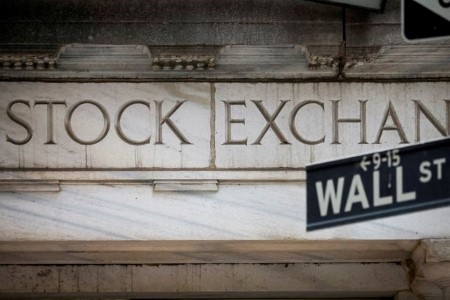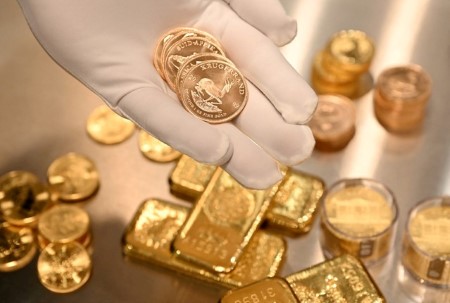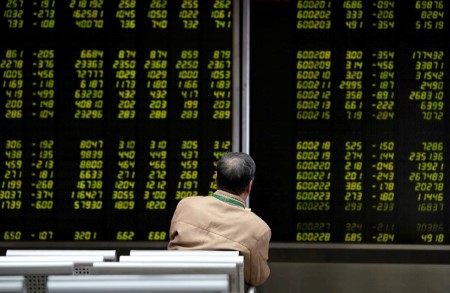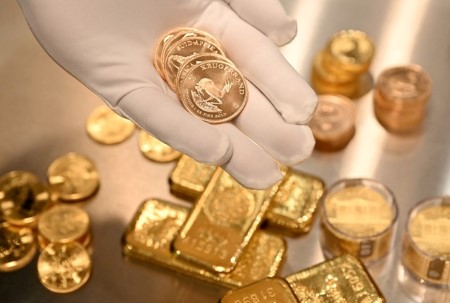NEW YORK – US 10-year Treasury yields rose on Friday, reversing earlier declines after comments from Federal Reserve Chair Jerome Powell indicated the central bank could be patient in determining when to cut interest rates.
Powell said the Fed does not need to be in a hurry to cut rates and it remains to be seen whether the Trump administration’s tariff plans will prove to be inflationary, while also listing other factors that could cause price pressures to become more persistent.
“Fewer rate cuts is less of a concern to the markets right now than the economic impact tariffs could potentially impose on the economy,” said Lindsey Bell, chief market strategist at Clearnomics, New York.
“Because of Powell’s assessment of the economy in a good place, investors are finding solace in that.”
Yields had dipped earlier in the session after a reading on the labor market pushed up market expectations for the amount of rate cuts from the Federal Reserve this year.
The Labor Department said nonfarm payrolls increased by 151,000 jobs last month, just below the 160,000 estimate of economists polled by Reuters, after rising by a downwardly revised 125,000 in January. The jobless rate ticked up to 4.1% from 4.0% in January.
Treasury yields have slipped in recent weeks as expectations the Fed will have leeway for more rate cuts than previously anticipated this year have grown due to indications the economy may be slowing.
Uncertainty surrounding President Donald Trump’s tariff announcements and their effect on prices, and the labor market impact from actions by the Department of Government Efficiency under Elon Musk to downsize the federal government, have also fueled economic worries.
“It’s not quite the softening in economic growth that a lot of investors were expecting based on some of the recent data,” said Gennadiy Goldberg, head of US rates strategy at TD Securities in New York.
“If you look at recent data surprise indicators, they’re really plummeting, which fanned expectations of sharply slower economic growth. The payroll number tells a more moderate story.”
The yield on the benchmark US 10-year Treasury note rose 3.8 basis points (bps) to 4.32%. For the week, the 10-year yield is up about 9 bps, on track to snap a five-week streak of declines.
The yield on the 30-year bond advanced 3.7 bps to 4.616%.
Traders are pricing in 69 bps of cuts by the US central bank this year, after recently pricing in less than 50 bps of cuts, according to LSEG data.
A closely watched part of the US Treasury yield curve measuring the gap between yields on two- and 10-year Treasury notes, seen as an indicator of economic expectations, was at a positive 31.4 bps.
The two-year US Treasury yield, which typically moves in step with interest rate expectations, gained 4.1 bps to 4.004% but was still on pace for its fourth straight weekly decline.
The breakeven rate on five-year US Treasury Inflation-Protected Securities (TIPS) was last at 2.562%, unchanged from its close on Thursday.
The 10-year TIPS breakeven rate was last at 2.337%, indicating the market sees inflation averaging about 2.3% a year for the next decade.
(Reporting by Chuck Mikolajczak, additional reporting by Sinéad Carew and Karen Brettell; editing by Mark Heinrich and Nia Williams)







 DOWNLOAD
DOWNLOAD




